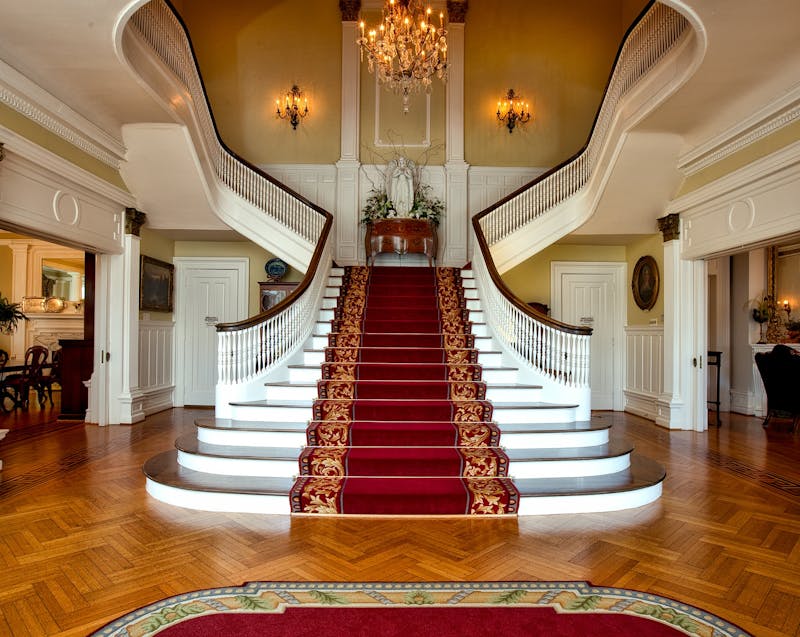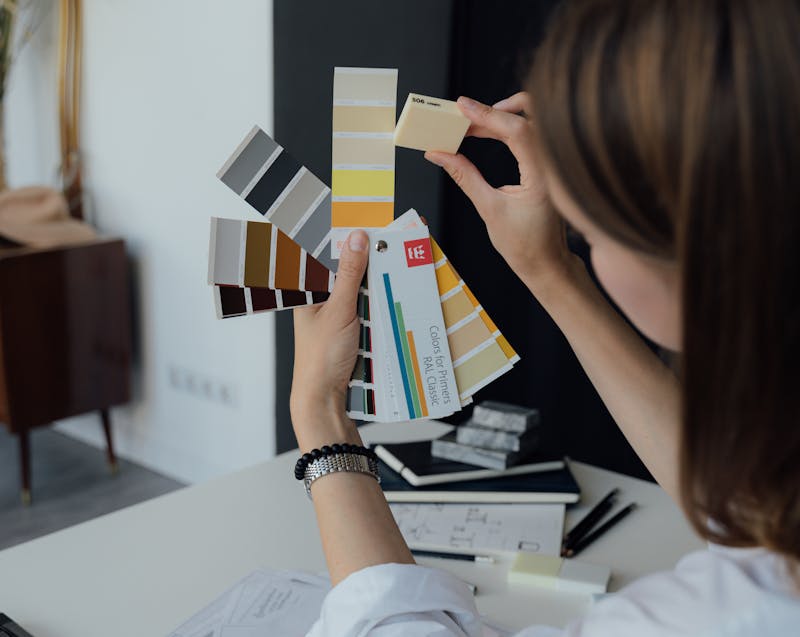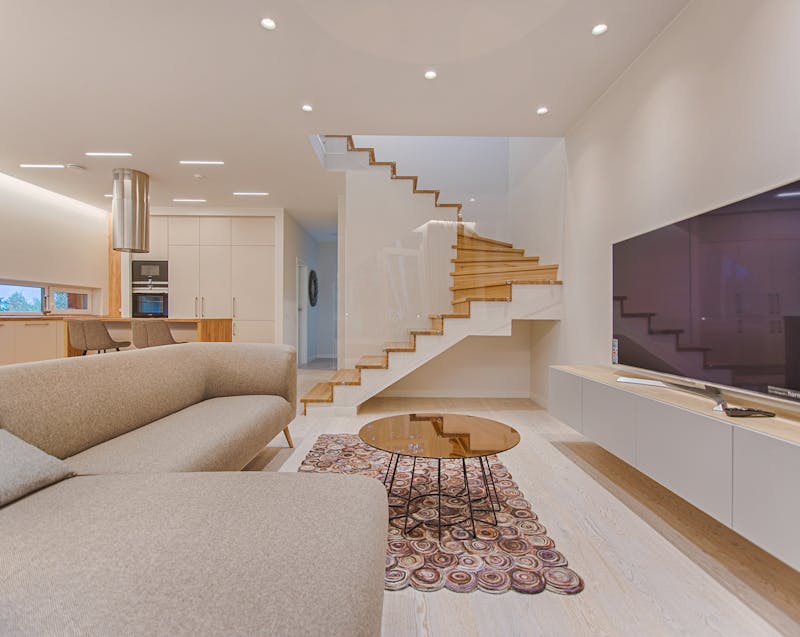- Luxury interior design is about quality and comfort, not just expensive decor—it focuses on craftsmanship, personalization, and timeless appeal.
- Modern luxury emphasizes simplicity and sustainability, using natural materials, smart technology, and eco-friendly practices.
- Attention to detail matters most—from lighting and textures to custom furniture and room flow, every element should feel intentional.
- Homeowners can achieve luxury on any budget by investing in key pieces, decluttering, and focusing on design balance.
- Professional designers can elevate results, helping homeowners refine their vision and access premium materials and craftsmanship.
- Luxury is an investment, not an expense, adding long-term comfort, satisfaction, and property value.
Creating a luxurious home isn’t just about spending money on expensive furniture or designer labels. It’s about crafting an environment that feels refined, comfortable, and uniquely personal. Luxury interior design combines elegance, function, and craftsmanship to create spaces that exude sophistication while enhancing everyday living. For homeowners who dream of a stylish yet livable home, understanding what truly defines luxury design is the first step to achieving it.
In this comprehensive guide, we’ll explore what luxury interior design means today, what makes it distinct, and how you can bring that refined aesthetic into your own home—regardless of size or budget.
Understanding the Essence of Luxury Interior Design
Luxury interior design goes far beyond visual appeal—it’s a way of living. It represents quality, comfort, and attention to detail that transform ordinary spaces into personalized sanctuaries. Unlike mass-produced designs, luxury interiors emphasize customization, where every material, texture, and finish is chosen with intention.
The concept has evolved over time. In the past, luxury often meant grandeur—high ceilings, gold accents, and elaborate furnishings. Today, modern luxury focuses more on understated elegance, sustainable materials, and harmony. Whether your taste leans toward contemporary minimalism or classic opulence, the goal remains the same: to create a home that looks beautiful and feels extraordinary.
Key aspects that define luxury design include:
- Quality craftsmanship that lasts for decades
- Thoughtful spatial planning to enhance comfort and flow
- Personalization that reflects the homeowner’s identity
- Use of premium materials like marble, hardwood, and fine textiles
- Integration of technology for convenience and modern living
Luxury interior design isn’t about following trends—it’s about creating timeless spaces that align with your lifestyle.
What Defines a Luxurious Space? Key Characteristics Every Homeowner Should Know

Before diving into specific styles and materials, it helps to identify the features that make a home feel luxurious. These are the subtle details that separate well-decorated homes from truly high-end interiors.
A luxurious home typically features:
- Exceptional craftsmanship: Every element—from joinery to lighting fixtures—feels deliberate and well-made.
- Spaciousness and flow: Even smaller homes can feel luxurious when the layout prioritizes openness, symmetry, and balance.
- Natural materials: Stone, wood, linen, and leather elevate the look and feel of interiors.
- Custom furnishings: Tailored furniture and cabinetry bring personality and precision to each room.
- Refined lighting: Layered lighting—ambient, task, and accent—creates depth and mood.
- Consistency: Each room maintains a cohesive aesthetic, creating a seamless experience throughout the home.
Luxury is as much about comfort as it is about style. A true luxury interior design makes you feel calm and at ease from the moment you walk in.
The Evolution of Luxury Interior Design Through the Years
Luxury interior design has changed dramatically over time. Historically, opulence was equated with wealth and excess—ornate furniture, rich colors, and intricate details. Think palaces and Victorian estates filled with chandeliers, velvet drapes, and carved wood. While that grandeur still appeals to some, today’s luxury has evolved toward subtlety and personalization.
In the early 20th century, Art Deco introduced glamour through geometry, glossy finishes, and bold metallic accents.
Mid-century modern design later brought simplicity and functionality to the forefront, using clean lines and natural materials.
Contemporary luxury today embraces both minimalism and warmth, with a focus on sustainability, craftsmanship, and smart home integration.
Modern homeowners prefer spaces that feel exclusive yet livable—a reflection of their tastes and experiences rather than a display of extravagance. The new definition of luxury prioritizes experience over excess.
Elements That Define Modern Luxury Interior Design
Modern luxury is characterized by balance—between sophistication and simplicity, comfort and aesthetics. It combines modern materials and technology with timeless design principles.
Here are the most important design elements homeowners should consider when aiming for a luxurious interior:
1. Quality Over Quantity
Luxury spaces prioritize fewer but better pieces. Each item has a purpose and adds value to the space—whether it’s a handcrafted dining table or custom lighting. Avoid clutter and choose statement pieces that anchor the design.
2. High-End Materials
Natural stone countertops, hardwood flooring, silk draperies, and brass fixtures lend instant elegance. These materials not only look refined but also age beautifully, adding character over time.
3. Customization
Bespoke design is at the heart of luxury interiors. Custom cabinetry, made-to-measure upholstery, and personalized art selections make your home feel truly one-of-a-kind.
4. Neutral Color Palettes
Soft neutrals—beige, ivory, taupe, and charcoal—dominate luxury spaces because they evoke calmness and sophistication. These hues allow textures and materials to stand out naturally.
5. Lighting as a Design Feature
Lighting defines mood and highlights architectural details. Use a mix of recessed lighting, wall sconces, chandeliers, and statement lamps to add drama and warmth.
6. Integrated Technology
Smart lighting, temperature control, and automated blinds elevate comfort and convenience without disrupting the aesthetic.
7. Art and Accessories
Luxury design celebrates individuality through carefully curated artwork, sculptures, and decor pieces that tell a story or spark emotion.
How to Achieve Luxury Interior Design at Home
Many homeowners assume luxury design is reserved for mansions or million-dollar budgets—but that’s far from true. With thoughtful planning and smart choices, anyone can introduce a touch of luxury into their living space.
Here’s how:
Start with a Clear Vision
Determine what “luxury” means to you. Do you want a minimalist retreat or a cozy, classic look? Collect inspiration from design magazines, Pinterest boards, or professional portfolios to identify your preferred aesthetic.
Invest in Key Pieces
You don’t have to overhaul your home all at once. Focus your budget on high-impact items like:
- A statement sofa or dining table
- Premium flooring or countertop material
- A designer light fixture
- Custom cabinetry or built-in storage
Play with Textures
Combine different materials to create depth. For example:
- Pair smooth marble countertops with warm wood cabinets.
- Mix velvet cushions with linen upholstery.
- Add plush rugs to contrast with metal or glass surfaces.
Prioritize Comfort
Luxury is synonymous with ease. Choose ergonomic furniture, soft fabrics, and layouts that encourage movement and relaxation.
Pay Attention to Lighting
Natural light enhances every design style. Maximize windows, use sheer curtains, and add mirrors to reflect light. Complement it with layered artificial lighting for evenings.
Declutter and Simplify
Luxury interiors are never crowded. Keep only what you love or need. Clean lines and open space instantly elevate your home’s appearance.
Room-by-Room Tips for a Luxurious Home
Luxury interior design applies to every area of your home—from the living room to the bathroom. Below are room-specific tips homeowners can use to elevate their spaces.
Living Room
- Choose a neutral palette with one or two accent colors.
- Use oversized artwork or mirrors to create a focal point.
- Incorporate layered lighting (floor lamps, chandeliers, recessed lights).
- Invest in quality upholstery with elegant textures like velvet or leather.
Kitchen
- Opt for quartz, marble, or granite countertops.
- Install custom cabinetry with soft-close mechanisms.
- Include under-cabinet lighting for ambiance and function.
- Integrate smart appliances to merge practicality with modern style.
Bedroom
- Use premium bedding—Egyptian cotton or linen.
- Add upholstered headboards for a plush look.
- Keep color palettes soft and soothing.
- Use ambient lighting to create a serene environment.
Bathroom
- Incorporate natural stone tiles or textured walls.
- Choose rainfall showerheads and freestanding tubs.
- Install backlit mirrors and sleek fixtures.
- Add scented candles or greenery for a spa-like feel.
Outdoor Spaces
- Use weather-resistant luxury furniture.
- Add ambient lighting, such as string lights or lanterns.
- Include a fire pit or water feature for visual appeal.
- Keep the design cohesive with your interior aesthetic.
Each room should tell a consistent story while maintaining its own sense of purpose and comfort.
The Role of a Professional Interior Designer in Luxury Homes

While DIY design can be fulfilling, creating a cohesive luxury interior often benefits from professional guidance. Interior designers bring expertise, resources, and creative vision that can turn your dream home into reality.
A professional designer can help you:
- Identify your personal style and translate it into a cohesive plan.
- Source exclusive materials, furniture, and artwork.
- Optimize space for comfort and flow.
- Manage budgets and timelines efficiently.
- Avoid costly design mistakes.
Working with an interior designer doesn’t necessarily mean losing control over your project—it means collaborating to achieve the best possible version of your vision. Many a roofing company that offers estimates works in a similar collaborative way with clients—understanding preferences, setting expectations, and ensuring value through expertise. The same principle applies to professional interior design partnerships.
Sustainable Luxury: Designing for the Future
Sustainability is now a major part of luxury interior design. Homeowners are increasingly conscious of how materials and manufacturing affect the environment, and modern luxury embraces this awareness.
Sustainable luxury includes:
- Eco-friendly materials: Bamboo, reclaimed wood, recycled metals, and organic fabrics.
- Energy-efficient systems: LED lighting, smart thermostats, and water-saving fixtures.
- Locally sourced products: Supporting artisans and reducing transport emissions.
- Longevity: Investing in quality pieces that stand the test of time reduces waste.
This approach proves that luxury and responsibility can coexist beautifully. A truly luxurious home not only looks good but also supports a healthier planet.
Common Mistakes to Avoid in Luxury Interior Design
Even the best intentions can go awry when designing for luxury. Here are common pitfalls homeowners should steer clear of:
- Overdecorating: Too many details or furnishings can make spaces feel cramped.
- Ignoring function: A beautiful room that isn’t practical won’t feel luxurious.
- Poor lighting: Inadequate or harsh lighting can ruin the atmosphere.
- Mixing too many styles: Inconsistency disrupts flow and elegance.
- Neglecting comfort: Aesthetics should never compromise relaxation and usability.
Remember: less is more. Luxury design is about precision and balance, not abundance.
Why Luxury Interior Design Is an Investment, Not an Expense
Some homeowners hesitate to invest in luxury interior design because they see it as an unnecessary cost. In reality, a well-designed home can increase property value, boost comfort, and enhance mental well-being.
Benefits of luxury interior design include:
- Long-term durability of materials and furnishings.
- Higher resale value due to timeless appeal.
- Enhanced comfort and functionality through thoughtful planning.
- Personal satisfaction from living in a space that reflects your identity.
Luxury design pays off both emotionally and financially—it transforms your home into a lasting asset that grows in value and appeal over time.
Final Thoughts: Redefining Luxury for the Modern Homeowner
Luxury interior design isn’t about replicating magazine pages or displaying wealth—it’s about creating a home that feels authentic, inviting, and well-crafted. Whether your taste leans toward modern simplicity or traditional opulence, the principles of luxury remain the same: quality, comfort, and individuality.
Homeowners who invest in thoughtful design enjoy more than visual appeal—they gain a sense of peace, pride, and purpose every time they step through their doors. True luxury lies in the details, and when those details come together harmoniously, your home becomes more than a living space—it becomes an experience.
